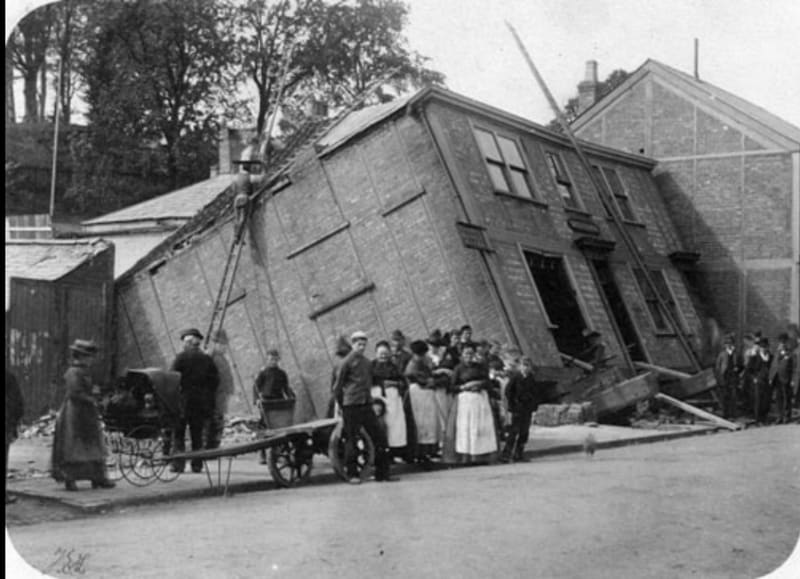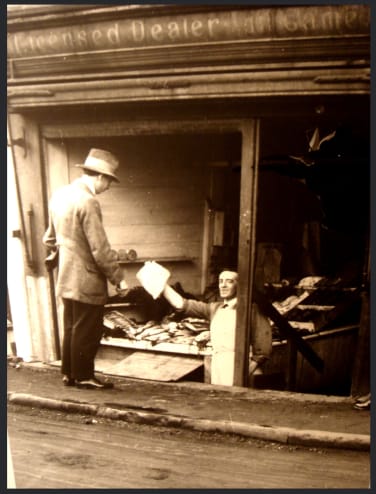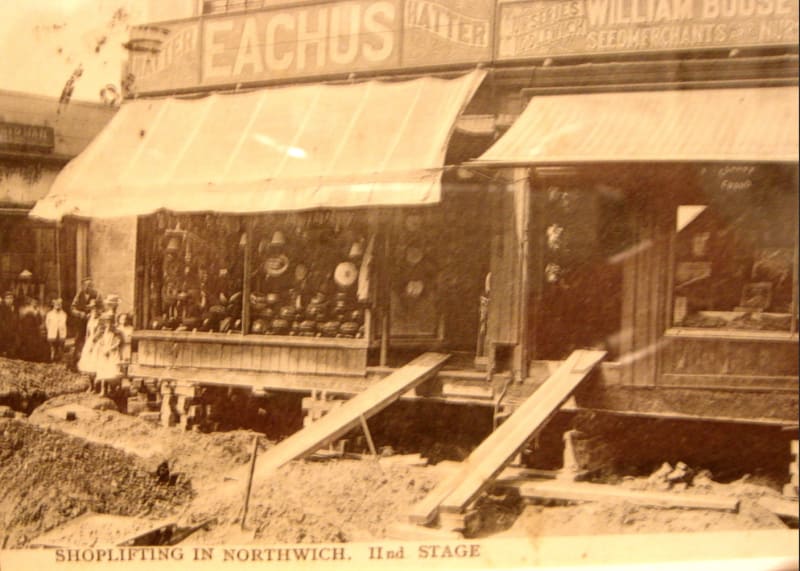Salt in the cellar

Under the green fields of the county of Cheshire in north-west England lie large deposits of rock salt, the legacy of salt marshes that covered the area in the Triassic period. The Romans founded a settlement called Condate, site of today’s Northwich, where they extracted salt by boiling brine in pans. Knowledge of the resource was then lost until prospectors for coal in the 17th century rediscovered salt below ground and started to dig mines. By the 19th century mining had become uneconomic. So the mining companies turned to recovering the salt by pumping hot water into the old workings and pumping up salt water, a process known as ‘wild brine pumping’. In time this created large unsupported caverns which, from 1870, began to collapse with little or no warning – although on occasion ‘ominous signs’ were noticed.
In the fields, small lakes – known locally as ‘meres’ or ‘flashes’ – appeared overnight. These might as rapidly be drained again, as the water found underground routes by which to escape. When old mines were suddenly flooded, there were eruptions of earth mixed with water out of holes in the ground, creating ‘mud volcanoes’. In the town of Northwich buildings tipped over, sank below street level, or disappeared into holes. One butcher’s shop served customers from a metre below pavement level. Door and window frames were remade to fit the distorted shapes of openings in brickwork.


A byelaw passed in 1881 decreed that new buildings should have timber frames, filled in with brickwork. At the base of the frame there was to be a ring beam of wood or steel, with points for attaching jacks. In the event of subsidence, these structures could be jacked up and levelled. A contemporary magazine photo shows ‘Shoplifting in Northwich’. Whole buildings could be shifted to new sites. Some were transported more than once. The Bridge Inn, which weighed 55 tons, was moved a distance of 50 metres in 1913, and moved again in 1998. Cheshire is known for its medieval specialty of ‘black and white’ timber-framed houses. The tradition was revived in Northwich to give architectural style to a number of handsome buildings with black frames and white plaster panels. Among these is the former Head Post Office of 1914, the town’s largest liftable structure, now The Penny Black public house.
Problems of subsidence have persisted into the 21st century. The practice of pumping brine has long been abandoned. Rock salt is now mined underground at Winsford near Northwich, one of just three salt mines still operating in Britain.
Thanks to visitnorthwich.co.uk and sconzani.blogspot.com. Photos from Stubby43 on imgur.com